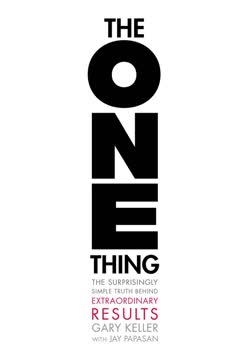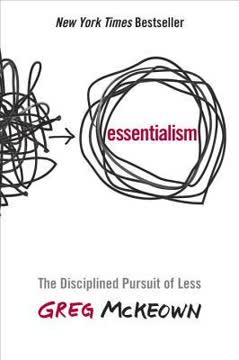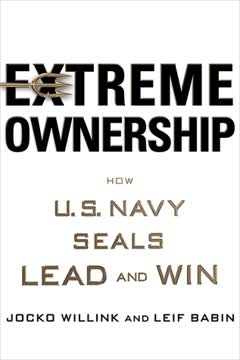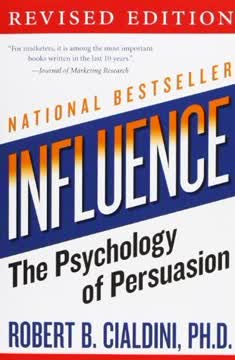Key Takeaways
1. Embrace the hybrid agency model to thrive in the evolving marketing landscape
Hybrid agencies will come to rule the marketing world.
The new marketing paradigm. Traditional marketing agencies are facing disruption due to rapid technological advancements and changing consumer behavior. Hybrid agencies, which blend digital and traditional services, are better positioned to meet evolving client needs. These agencies:
- Offer integrated services across multiple disciplines (e.g., PR, SEO, content, social media)
- Adapt quickly to market changes and new technologies
- Focus on measurable outcomes rather than arbitrary metrics
Key characteristics of hybrid agencies:
- Tech-savvy approach to service delivery
- Diverse talent pool with versatile skill sets
- Multiple revenue streams beyond traditional billable hours
- Agile infrastructure that enables rapid adaptation
By embracing this model, agencies can remain relevant and competitive in the face of industry transformation.
2. Shift from billable hours to value-based pricing for increased profitability
Inefficiency is the enemy of success.
Rethinking pricing models. The traditional billable hour system is flawed, rewarding inefficiency and failing to align with client value. Value-based pricing offers a more equitable and profitable alternative. This approach:
- Focuses on outcomes rather than inputs
- Allows for higher profit margins on efficiently delivered services
- Encourages innovation and productivity improvements
Implementing value-based pricing:
- Define clear deliverables and expected outcomes for each service
- Assess the perceived value to the client, not just the time invested
- Create pricing tiers or packages based on service complexity and value
- Regularly review and adjust pricing based on performance and market demand
By shifting to this model, agencies can better demonstrate their worth to clients while improving their own financial performance.
3. Leverage technology and the cloud to enhance efficiency and scalability
A real-time world demands real-time agencies.
Embracing technological advancements. Cloud-based solutions and emerging technologies offer agencies unprecedented opportunities to streamline operations and scale services. Key benefits include:
- Reduced overhead costs
- Improved collaboration and communication
- Enhanced ability to adapt to changing client needs
Essential tech stack for hybrid agencies:
- Project management tools (e.g., Basecamp, Asana)
- Customer Relationship Management (CRM) systems
- Cloud-based file storage and sharing
- Marketing automation platforms
- Analytics and reporting software
By investing in the right technologies, agencies can increase productivity, improve service delivery, and position themselves for sustainable growth.
4. Recruit and nurture versatile talent to build a formidable competitive advantage
Talent cannot be replicated.
Building a strong team. In the hybrid agency model, versatile professionals who can adapt to changing market demands are essential. Focus on:
- Recruiting individuals with diverse skill sets and a growth mindset
- Providing continuous learning opportunities to keep skills current
- Fostering a culture that encourages innovation and collaboration
Key traits of hybrid agency professionals:
- Strong analytical and creative abilities
- Proficiency in multiple marketing disciplines
- Excellent communication and client management skills
- Adaptability and willingness to learn new technologies
- Intrinsic motivation and passion for the industry
By prioritizing talent development, agencies can create a workforce capable of delivering exceptional results across various marketing channels.
5. Develop an agile infrastructure to adapt quickly to market changes
The best plan is to prepare for perpetual change.
Designing for flexibility. An agile infrastructure allows agencies to pivot quickly in response to market shifts and client needs. Key components include:
- Scalable systems that can grow with the agency
- Flexible work arrangements to accommodate diverse talent
- Modular service offerings that can be easily customized
Creating an agile agency:
- Implement cloud-based tools for easy scaling
- Establish clear communication channels for rapid decision-making
- Develop standardized processes that can be quickly adapted
- Foster a culture of continuous improvement and innovation
By building agility into the core of the agency, leaders can ensure their organization remains competitive and relevant in a rapidly evolving industry.
6. Implement inbound marketing strategies to generate leads and build loyalty
Doing is the key to differentiation.
Practicing what you preach. Agencies must leverage inbound marketing techniques not only for clients but also for their own growth. Effective strategies include:
- Creating valuable content that demonstrates expertise
- Optimizing online presence for search engines
- Engaging with target audiences through social media
- Building a strong agency brand that attracts both clients and talent
Key components of an agency inbound marketing plan:
- Regularly updated blog with industry insights
- Search engine optimized website
- Active presence on relevant social media platforms
- Lead generation content (e.g., whitepapers, webinars)
- Email marketing campaigns for nurturing prospects and clients
By excelling in their own marketing efforts, agencies can prove their capabilities and attract high-quality clients.
7. Create a robust sales system that aligns with your agency's growth goals
Everything is sales.
Developing a strategic approach to growth. A well-designed sales system is crucial for sustainable agency expansion. Key elements include:
- Clear definition of ideal client profiles
- Standardized processes for lead qualification and nurturing
- Integration of marketing and sales efforts
- Regular performance tracking and optimization
Building an effective agency sales funnel:
- Lead generation through inbound marketing and networking
- Lead qualification based on predefined criteria
- Personalized nurturing campaigns for qualified prospects
- Proposal development and presentation
- Post-sale onboarding and relationship management
By implementing a systematic approach to sales, agencies can ensure a steady flow of new business that aligns with their strategic objectives.
8. Prioritize client relationships and deliver measurable results
All clients are not created equal.
Focusing on client success. Strong client relationships are the foundation of agency growth and stability. To build lasting partnerships:
- Invest in understanding each client's unique needs and goals
- Provide transparent communication and regular performance updates
- Continuously seek opportunities to add value beyond contracted services
Strategies for enhancing client relationships:
- Implement a key account management program
- Conduct regular strategy sessions with clients
- Provide proactive recommendations for improvement
- Celebrate client successes and milestones
- Seek and act on client feedback
By prioritizing client success, agencies can increase retention rates, generate referrals, and build a strong reputation in the industry.
9. Become data-driven to continuously improve and demonstrate value
An agency's value is measured in outcomes, not outputs.
Harnessing the power of analytics. Data-driven decision-making is crucial for agency success in the digital age. Key areas to focus on include:
- Setting clear, measurable objectives for all campaigns
- Implementing robust tracking and reporting systems
- Regularly analyzing performance data to optimize strategies
Essential metrics for agency performance:
- Client retention rates
- Revenue per client
- Lead generation and conversion rates
- Campaign ROI
- Team productivity and efficiency
By embracing a data-driven approach, agencies can continuously improve their services and clearly demonstrate their value to clients.
10. Foster a culture of innovation and embrace calculated risks
Never hesitate to head in a direction that others seem to fear.
Encouraging creativity and experimentation. To stay ahead in a rapidly changing industry, agencies must cultivate an environment that supports innovation. This involves:
- Encouraging employees to propose and test new ideas
- Allocating resources for research and development
- Embracing failure as a learning opportunity
Strategies for fostering innovation:
- Implement regular brainstorming sessions
- Create cross-functional teams to tackle challenges
- Provide time and resources for personal projects
- Celebrate and reward innovative thinking
- Share lessons learned from both successes and failures
By fostering a culture of innovation, agencies can differentiate themselves in the market and attract forward-thinking clients and talent.
Last updated:
FAQ
What is The Marketing Agency Blueprint by Paul Roetzer about?
- Comprehensive agency handbook: The book is a practical guide for building hybrid marketing agencies that integrate PR, SEO, content, advertising, and web services.
- Focus on transformation: It addresses the need for traditional agencies to evolve in response to rapid technological change, selective consumption, and new success factors.
- Blueprint for success: Roetzer provides a detailed roadmap covering agency infrastructure, talent management, inbound marketing, sales systems, client loyalty, and embracing innovation.
Why should I read The Marketing Agency Blueprint by Paul Roetzer?
- Industry evolution insights: The book offers a clear understanding of the forces reshaping marketing agencies and how to adapt to them.
- Actionable strategies and examples: Roetzer shares proven frameworks, real-world examples, and lessons from his own agency, PR 20/20.
- Growth and efficiency focus: Readers gain tools to eliminate inefficiencies, build scalable infrastructure, recruit top talent, and create diversified revenue streams.
What are the key takeaways from The Marketing Agency Blueprint by Paul Roetzer?
- Hybrid agency model: Agencies must integrate digital and traditional services, leveraging technology for efficiency and profitability.
- Value-based pricing: Moving away from billable hours to value-based pricing aligns agency compensation with client outcomes.
- Talent and culture: Building a motivated, versatile team and a strong agency culture is essential for sustainable growth.
- Measurement obsession: Agencies should become “measurement geeks,” using data-driven insights to adapt and demonstrate value.
What is the "hybrid agency" model described in The Marketing Agency Blueprint by Paul Roetzer?
- Integrated services: Hybrid agencies blend traditional marketing with digital disciplines like SEO, social media, content marketing, and web development.
- Versatile talent: They hire professionals with hybrid skills and foster a culture of agility and collaboration.
- Diversified revenue streams: Hybrid agencies pursue consulting, training, publishing, and software partnerships to expand their offerings.
- Tech-savvy infrastructure: Embracing cloud-based tools and partnerships (e.g., HubSpot VAR program) is key to staying competitive.
How does The Marketing Agency Blueprint by Paul Roetzer define and recommend value-based pricing?
- Standardize and set prices: Services should be clearly defined, standardized, and assigned fixed prices for transparency and profitability.
- Seven pricing variables: Pricing considers efficiency, hourly revenue targets, costs, perceived value, service type, loss leader status, and service level.
- Focus on outcomes: Agencies must deliver value and results, not just hours, shifting the focus from outputs to client outcomes.
Why does Paul Roetzer criticize the billable-hour model in The Marketing Agency Blueprint?
- Salary-rate fallacy: The book exposes the flawed logic of equating salary to billable rates, ignoring actual value delivered.
- Inefficiency penalizes clients: Clients pay for agency inefficiencies, leading to inflated costs and poor transparency.
- Discourages productivity: The billable-hour model incentivizes logging hours over delivering results, straining client relationships.
What is the Inbound Marketing GamePlan in The Marketing Agency Blueprint by Paul Roetzer?
- Eight-step strategic process: The GamePlan includes brand definition, content-driven website design, audience segmentation, and integrated campaigns.
- Lead generation and loyalty: It focuses on generating leads and building client loyalty through valuable content and engagement.
- Measurement and adaptation: Agencies are encouraged to set benchmarks, track analytics, and evolve strategies in real time.
How does The Marketing Agency Blueprint by Paul Roetzer recommend building and managing agency talent?
- Recruit A players: Focus on hiring intrinsically motivated, versatile professionals with strong analytical and communication skills.
- Develop through training: Invest in young talent with comprehensive training, clear career paths, and a supportive culture.
- Data-driven management: Use performance metrics, regular reviews, and a culture of loyalty to retain top talent and reduce turnover.
What sales system and traits for salespeople does The Marketing Agency Blueprint by Paul Roetzer recommend?
- Formalized sales systems: Agencies should manage leads, prospects, and customers with scalable processes and CRM tools.
- Key salesperson traits: Top performers exhibit modesty, conscientiousness, achievement orientation, curiosity, and resilience.
- Training and assessment: Most agency salespeople need formal training and regular assessments to identify and improve weaknesses.
How does The Marketing Agency Blueprint by Paul Roetzer advise agencies to build client loyalty and commitment?
- Value and personalization: Agencies must deliver insight, innovation, and personalized attention to become indispensable to clients.
- Systems and culture: Implement career paths, account management dashboards, and regular meetings to ensure consistent service.
- Client advocacy: Assign senior leaders as client advocates to monitor account health and drive continuous improvement.
How does The Marketing Agency Blueprint by Paul Roetzer address measurement, results, and innovation?
- Outcomes over outputs: Agencies should focus on meaningful metrics like leads, sales, and website traffic, not just media impressions.
- Measurement integration: Use analytics and marketing automation tools to track and adapt campaigns in real time.
- Embrace failure and experimentation: Agencies should foster a culture that encourages learning from failure and continuous innovation.
What is the role of purpose in agency success according to The Marketing Agency Blueprint by Paul Roetzer?
- Purpose over profits: True agency success is defined by a sense of purpose that motivates employees and leadership beyond financial goals.
- Purpose pyramid: The book introduces a five-level pyramid—pursuit, people, process, performance, and purpose—to support agency vision and culture.
- Alignment and evolution: Purpose evolves with the agency and its people, requiring leaders to foster intrinsic motivation and align actions with a greater mission.
Review Summary
The Marketing Agency Blueprint receives mixed reviews, with an average rating of 3.86/5. Readers appreciate its insights on agency management, pricing, and digital marketing strategies. Many find it valuable for new agency owners, praising its practical advice and actionable ideas. However, some criticize it for being outdated and lacking depth in certain areas. Positive reviews highlight its usefulness in understanding modern marketing agencies, while negative reviews point out discrepancies between the author's advice and his own agency's practices. Overall, it's considered a helpful resource for those in the marketing industry.
Similar Books










Download PDF
Download EPUB
.epub digital book format is ideal for reading ebooks on phones, tablets, and e-readers.





